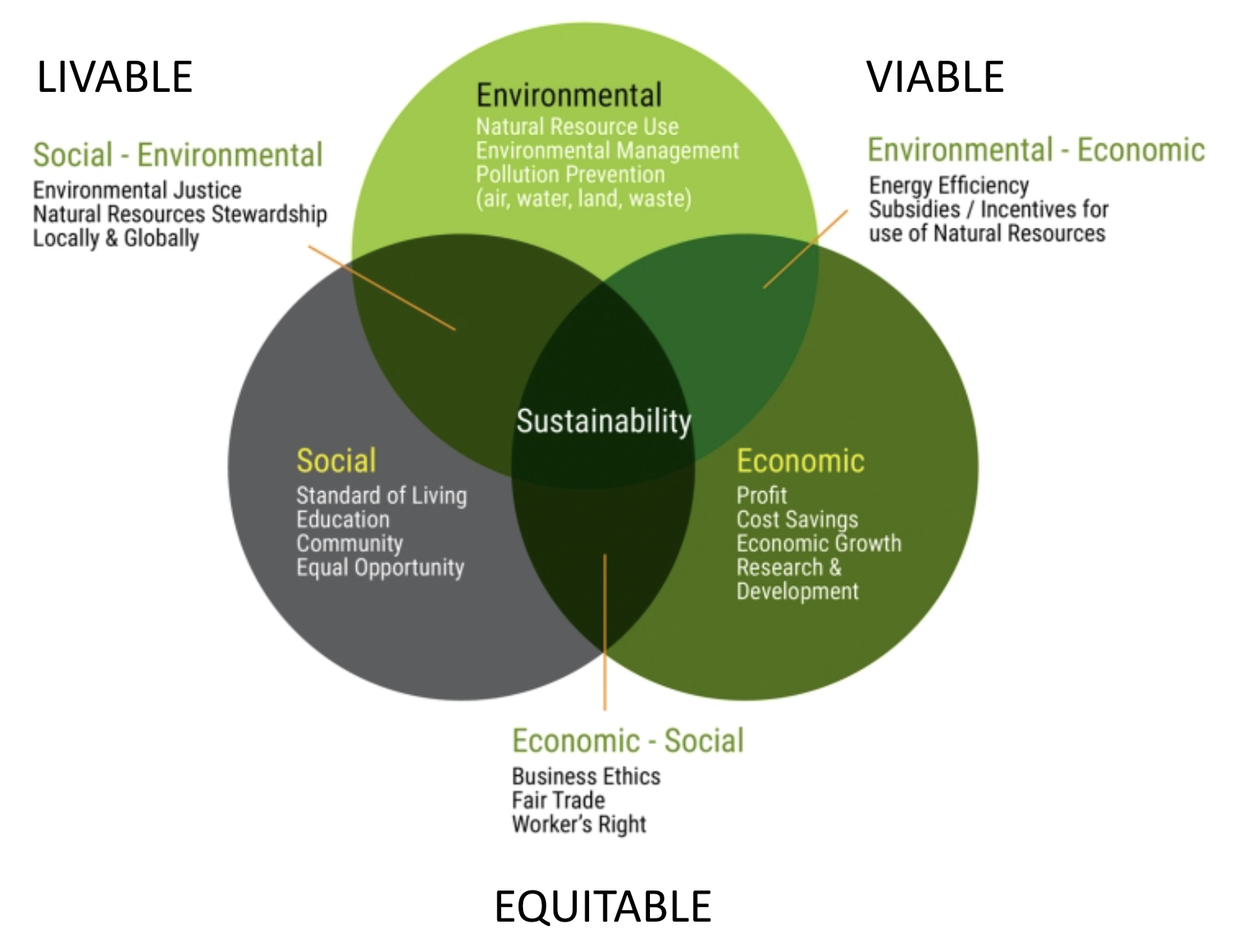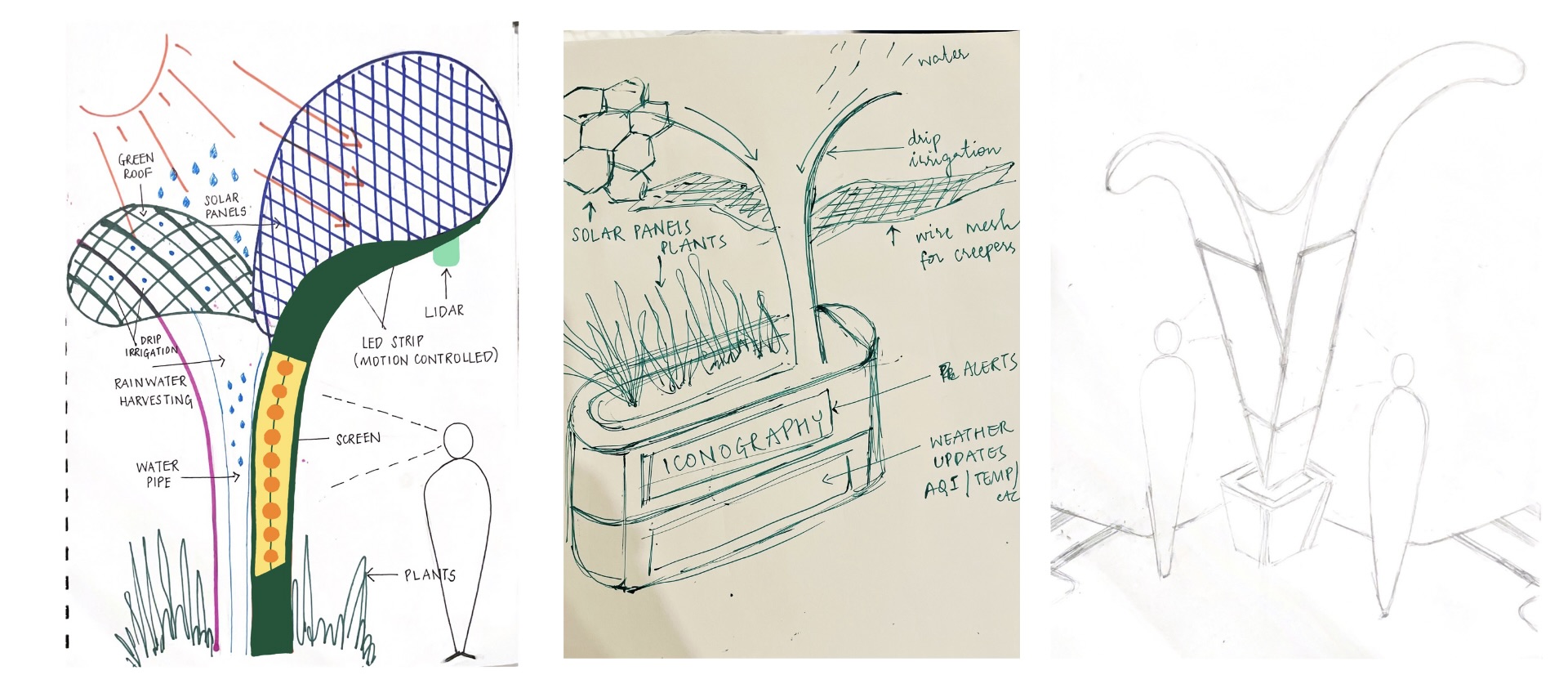Quote of the Week:
Aastha: “I found a gold mine!” – while sharing the NYC sustainability report with the team
Susanna: “Wow, that is like our future scenario published! We are about to witness a real-life Greentocracy soon 🌳”
Since the beginning of the CBI A3 program, our project has made noticeable strides through research, ideation, sketching, and envisioning the future ahead of us. Given that the core of this endeavor is an in-depth study of the United Nations Sustainable Development Goals, it was evident from the beginning of the program that the focus would be directed toward understanding and incorporating the characteristics of sustainable development in our own project. Now halfway through the second phase, our weekly discussions have expanded to an ethical dimension, creating progression towards considering the ecological consequences of our product and its significance for the ecosystem. Thus, a concept of Planet-Centric Design was introduced, providing a framework for incorporating a sustainable perspective into our technology-driven solution.
Exploring Sustainable Development
Sustainability has been on the rise in several fields and can also be seen in recent and future technology trends. We delved into the core of sustainable development over this project phase, and studied the elements that contribute to making technological innovations sustainable. We aimed to scrutinize sustainable development from the perspective of emerging technologies, which is an integral part of engineering and development, but also in design, where preliminary decisions are made to create a product. As an eager advocate of sustainability, I had a certain idea about the meaning of the term, but participating in these reflections offered new perspectives that deepened my understanding of them. Although the general understanding of sustainability is often associated with environmental friendliness, its scope goes beyond covering socio-economic factors affecting societies and businesses. For instance, ensuring equal opportunities for users and evaluating how a product can contribute to cost savings during its lifespan, while taking into account ethical considerations and the impact it will have on future generations. The balance between these elements create a global community that is livable, viable, and equitable, which is the ultimate goal for any product that strives for sustainability.

A diagram illustrating components that create sustainable products and businesses.
Up to this stage, Auriel has evolved into a product that has the potential to transform the existing infrastructure system. We shifted our perspective from the finer details of the solution to include a more broader global perspective and discussed the product’s interactions with the surrounding world while also considering the future scenario. Envisioning a notably more greener and environmentally sustainable future, we began to think about how our design could have a positive impact on society and the environment. How can we possibly change the current global system that has gradually disconnected us from nature, so that people could again feel more connected to it? Though this question might not have a clear answer, it can still guide designers, engineers, business leaders, and all humans part of the system who shape society through our daily actions.
Planet-Centric Design
Our goal in developing Auriel was to adopt the principles of planet-centered design, bringing forth a positive and environmentally beneficial change. We received guidance and advice for such endeavors from our CBI program instructors and lecturers. The first advice guided us to promote a sustainability-driven purpose for our work, an obvious but essential principle that aligns with the concepts of responsibility and ethics, which should direct our decision-making path. Our primary focus was on transforming the infrastructure to be more environmentally friendly, while also concentrating on design aspects that visually promote the concept of sustainable development to the general public. Another piece of advice was to personify the people, fauna, and flora affected by our project in a similar way we would personify the users, as is often the case in a design process. Who might be influenced by a novel object situated on a street corner, offering information through its visual displays? Other interesting questions also arose during this brainstorming session, including the possibility of Auriel serving as a habitat for plants and its potential to harvest rainwater to mitigate street flooding, another common issue in New York. The final advice for how to embrace the planet-centric design principles was to design our supply chain to have a positive impact on society and lower its environmental footprint. In practice, implementing this principle would require assessing the pre-deployment, deployment, and post-deployment phases of Auriel. While the actual implementation of our project remained uncertain, this forward-looking exercise was useful in identifying factors for the potential future progress of the project.
To further enhance our comprehension of the topic, we delved into a recently updated report released by the City of New York during the spring of 2023 for a program named PlaNYC. The program is a city initiative to implement comprehensive sustainable development measures to combat climate change while improving the quality of life for New Yorkers [1]. It became necessary to evaluate how Auriel could work as a contributing factor in the framework of PlaNYC, which the municipal authorities had set for implementing sustainability in the city. A collaboration with city stakeholders who could potentially help us implement our groundbreaking solution, might become beneficial once our project reaches its deployment phase.
Innovating With Purpose
Throughout the course, we learned that designers should take a responsible approach to innovation and take into account human values, technological feasibility, commercial viability, and environmental and ethical responsibility. For Auriel, however, another aspect required attention – ensuring accessibility of the product for different user groups, such as visually impaired, as Auriel would widely be available to all citizens walking the streets of New York (and beyond). In addition, we began to expand research on how our innovation could go beyond a negative environmental impact and instead achieve a net positive ecological outcome. We learned about concepts related to the sustainable creation process, including biomimicry – a term referring to nature-inspired innovation. As our product ideation journey progressed, we retained the newly introduced keyword, “nature-inspired” to guide us as we moved towards a more environmentally conscious and green infrastructure, which we had already envisioned through the future scenario.
Initiating new product sketches and visual representations began to mimic a giant green plant that would not only contribute to the city’s vision to add more natural vegetation to the streets but also encourage people to walk more instead of traveling short distances by car. Our team experienced a pivotal moment when we realized Auriel’s potential to change behavior patterns in society, fostering a sense of pride in the project’s progress towards revolutionizing road safety. Perhaps Auriel could be integrated into a future infrastructure that even serves as an educational platform for themes such as sustainability and ethical responsibility. However, we already have the opportunity to influence these aspects through design choices, such as opting environmentally sustainable materials.

Sketches of Auriel turning into a giant plant-looking object that provides traffic alerts to people through its visual screens.
Infrastructure planning has traditionally employed materials known to have harmful effects on the environment and the climate, such as concrete and steel. The manufacturing processes of these materials cause climate pollution on an enormous scale, resulting in significant part of the world’s greenhouse gas emissions. As aspiring designers enlightened about sustainability and planet-centric design, it became evident that our selection of product materials should include an evaluation of their ecological footprint, should we intend Auriel to act as a pioneering example in the field of sustainability. With the ongoing global warming, and the rapid weather changes that are typical in New York, we wanted to bear in mind Auriel’s ability to withstand the effects of extreme weather conditions such as high temperatures.
Our research skills were once again put into practice, as we unraveled the range of materials that could potentially be integrated into our product and its brand identity. We began evaluating materials that are frequently used in current infrastructure, followed by exploring more eco-friendly options as potential alternatives. The Miro board again underwent an expansion as it contained additional information concerning the materials in question, including recycled plastic and metal, which eventually were disregarded in favor of a biocomposite made from renewable natural resources as our chosen path toward sustainability.
In connection with the material selection, Auriel’s energy consumption was also taken into consideration, with a particular focus on its potential to function as a self-sufficient product capable of producing its own energy. The New York City sustainability plan (the PlaNYC -program) embraces a transition to green renewable energy across the city, specifically through solar installations, thus presenting an opportunity for Auriel to align with this goal. Simultaneously, we also explored alternative roles for Auriel to be integrated into a smart city, such as practicing intelligent energy consumption, potentially enabling Auriel to not only conserve energy but also serve as an energy distributor to other neighboring objects. The operation of smart cities is widely based on various technological innovations. Due to Auriel operating as a communication network gathering data on urban mobility, our solution has the potential to provide assistance and advantages to future city planners in making informed decisions aiming to build more efficient and sustainable smart cities.
With more than half of the CBI A3 program now behind us, our project had made significant progress marked by the team’s reflection on the growing importance of sustainability and commitment to environmentally conscious development through design decisions. Our holistic perception of sustainability had evolved, which comprised not only environmental factors but also social and economic influences. Striving for a balance between these aspects, the team continued to develop our innovation to promote the ultimate goals of sustainable development and positively strengthen the relationship between the community and nature.
Moving forward, our focus was about to shift towards finalizing design-related choices to transition the solution concept into a tangible representation. This would lead us to the next stage, prototyping the product idea, allowing us to evaluate its visual presentation in addition to the functional efficiency of the design. Entering the prototyping phase would further provide opportunities for product refinement and improvement.
References:
- PlaNYC: Getting Sustainability Done: https://climate.cityofnewyork.us/initiatives/planyc-getting-sustainability-done/
- CBI intro to Planet Centric Design by Carolina Faria: https://www.youtube.com/watch?v=wS6y186YUzU
- CBI Sustainable Technology lecture material by Anna Rolewicz-Kalinska

Recent Comments